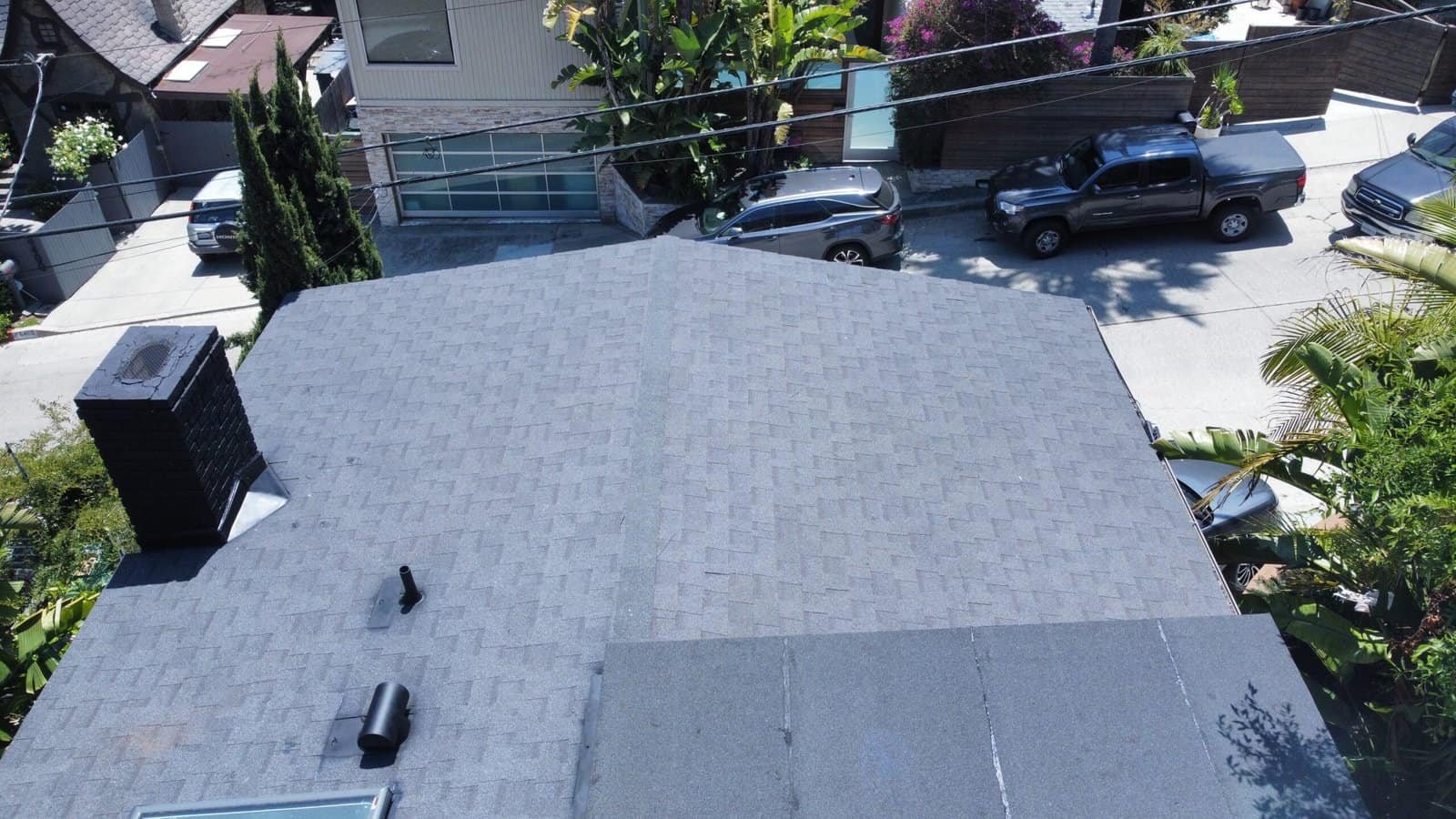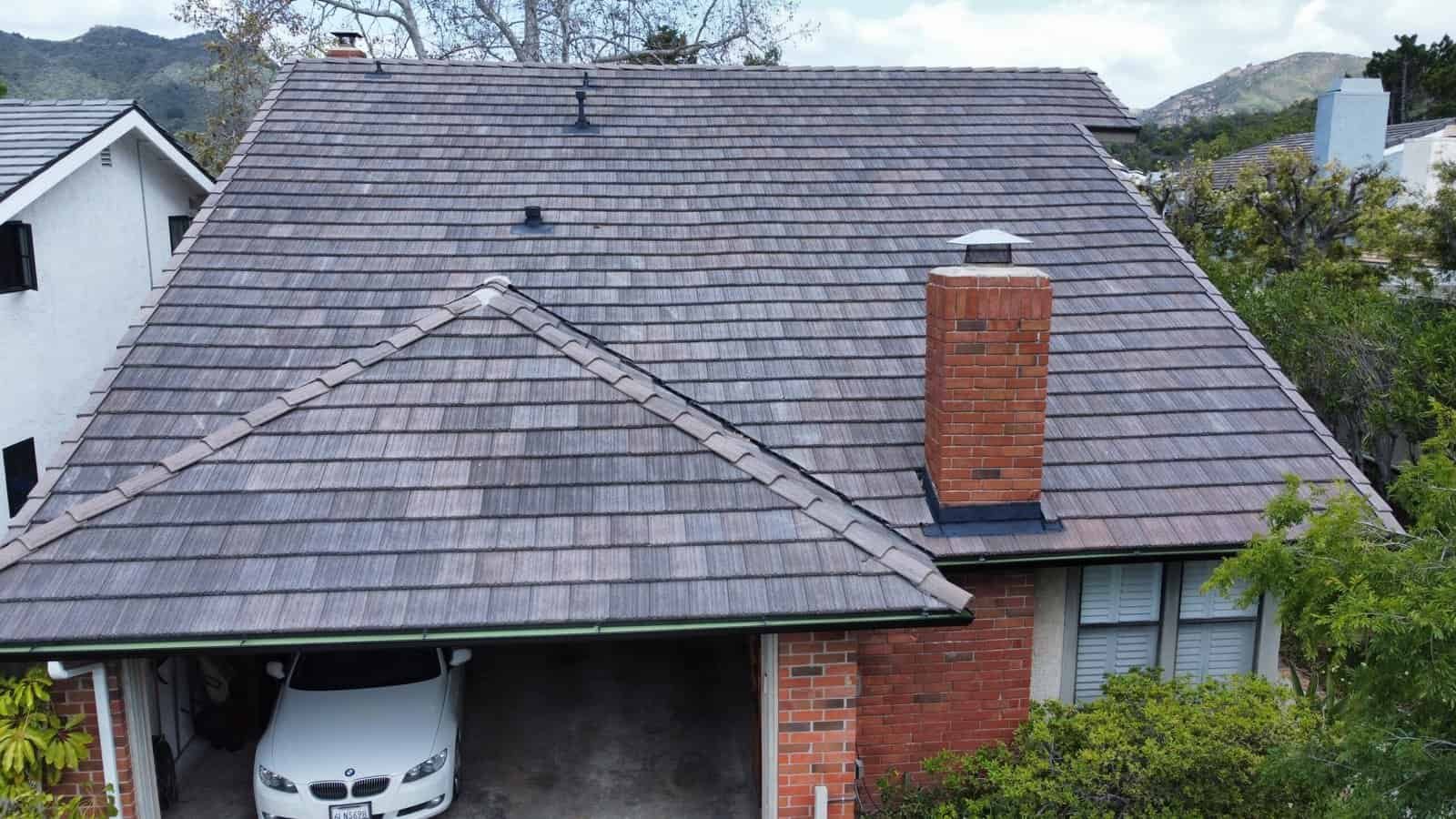Your roof is one of the most vital components of your home, protecting you and your family from the elements. And one essential part of any roof system is the chimney flashing: a protective metal layer installed at the base of the chimney to prevent leaks, drafts, and even pest invasions. Sadly, flashing can deteriorate over time, causing significant damage to your roof’s structure and creating an opportunity for water damage to wreak havoc on your home’s interior.
Table of Contents
ToggleTo prevent these negative outcomes, it’s essential to address damaged chimney flashing promptly. In this post, we’ll explore the importance of addressing broken chimney flashing and provide expert insight.

Importance of Chimney Flashing in Roof Maintenance
Now, let’s delve into the key reasons why chimney flashing plays an integral role in roof maintenance:
- Prevents Water Damage: Chimney flashing forms an impermeable barrier between your roof and chimney, effectively preventing rain, snow, and other forms of precipitation from seeping into your home. Without it, water can easily penetrate your roofing materials and cause extensive damage.
- Keeps Pests Out: Flashing also serves as a deterrent to pests, including rodents, birds, and insects. These pests can cause significant damage if they manage to infiltrate your home, but a properly installed and maintained flashing prevents them from gaining access.
- Energy Efficiency: Damaged or missing flashing can lead to drafts, making your home less energy-efficient. By sealing off potential entry points for cold air, flashing helps keep your home warm in the winter and cool in the summer.
- Structural Integrity: Over time, water damage caused by faulty chimney flashing can lead to the deterioration of your roof’s structural integrity. This can result in costly repairs or even the need for a complete roof replacement.
- Home Value: Ultimately, maintaining your chimney flashing is an investment in your home. It helps maintain the overall condition and appearance of your property, which can significantly impact its market value.
Identifying Broken Chimney Flashing
Identifying broken chimney flashing is crucial for overall roof maintenance and avoiding potential damage. Here are several signs that your chimney flashing may need repair or replacement:
- Rust or Corrosion: If you notice rust or corrosion on the flashing, it’s a clear sign that the metal is deteriorating and needs to be replaced.
- Water Stains: Water stains on the ceiling or walls near your chimney are often a sign of a leak, which could be caused by damaged flashing.
- Visible Damage: If you can see visible damage such as cracks, bending, or holes in the flashing from the ground, it’s likely that the flashing is broken.
- Loose Flashing: Over time, flashing can become loose due to harsh weather conditions or simply the passage of time. If your flashing is not securely attached to the chimney, it needs attention.
- Dampness or Musty Smell: If you notice a damp or musty smell in your home, especially after a rainfall, this could indicate a leak caused by broken chimney flashing.
Potential Consequences of Ignoring Flashing Issues
If left unresolved, broken chimney flashing can cause several serious issues for your roof and home. The most obvious effect of flashing issues is a water leak. Water penetrates through cracks in the roof and chimney areas, infiltrating your ceiling and attic space.
This can then lead to mold growth, which poses health risks to you and your family. Roof leaks also compromise energy efficiency and can cause electrical damage as well, which could result in costly repairs. Ultimately, ignoring flashing issues could lead to whole roof replacement and sky-high bills.
Preventative Measures and Maintenance Tips
If you want to protect your roof’s structural integrity and avoid costly repairs, you should consider investing in preventative measures and regular maintenance. Golden Coast Roofing recommends the following:
- Regular Inspections: Make it a habit to inspect your chimney flashing regularly, especially after severe weather conditions. Look for signs of damage, such as rust, detachment, or visible cracks.
- Professional Maintenance: Hiring a professional to conduct annual or bi-annual inspections of your roof and chimney flashing can be a wise investment. Professionals have the expertise to identify potential issues before they become serious problems.
- Prompt Repairs: If you notice any signs of damage, don’t delay repairs. Prompt action can prevent minor issues from escalating into major problems that could require a complete roof replacement.
- Quality Materials: When installing or replacing chimney flashing, ensure to use high-quality materials that can withstand harsh weather conditions. This might cost more upfront, but it can save you money in the long run by reducing the frequency of repairs.
- Proper Installation: Proper installation is key to the effectiveness of chimney flashing. If not installed correctly, even the best materials can fail. Always hire a qualified professional to install or replace your chimney flashing.
- Sealant Checks: Regularly check the sealant around the flashing. Over time, it can erode, allowing water to seep in. If you notice any deterioration, have it resealed as soon as possible.
- Cleaning: Keeping your roof and chimney clean can help prolong the life of your flashing. Debris, bird droppings, and other materials can cause corrosion over time, so regular cleaning can help prevent this.
- Prune Overhanging Trees: Overhanging branches can damage your roof and chimney flashing, especially during storms. Prune any tree branches that pose a risk to prevent potential damage.

Conclusion
If you’re a homeowner, keeping your roof and flashing in good condition is crucial to ensuring your safety and comfort. Ignoring flashing issues, whether cracks, leaks, or gaps, can lead to severe and costly consequences down the line.
To prevent unnecessary expenditure, you should invest in preventative measures and regular maintenance for your roof and flashing. At Golden Coast Roofing, we’re dedicated to helping our clients with all their roofing needs, from installation, repair, maintenance, to replacement. Contact us today and schedule an inspection with our team of experts. Stay dry. Stay safe.
Frequently Asked Questions
What are the common signs of broken chimney flashing?
Common signs of broken chimney flashing include water stains on the ceiling near the chimney, visible gaps or rust on the flashing itself, and loose or missing pieces around the chimney base. Additionally, if there is mold or moisture in the attic near the chimney, it could also indicate a problem with the flashing.
Can broken chimney flashing lead to leaks inside the home?
Yes, broken chimney flashing can lead to leaks inside the home. It allows water to seep through the roof and into the interior, potentially causing damage to ceilings, walls, and other structures near the chimney area.
How often should chimney flashing be inspected for damage?
Chimney flashing should be inspected for damage at least once a year, typically as part of a regular roof maintenance check. It's also wise to inspect it after severe weather events, such as heavy storms or high winds, which can cause damage.
